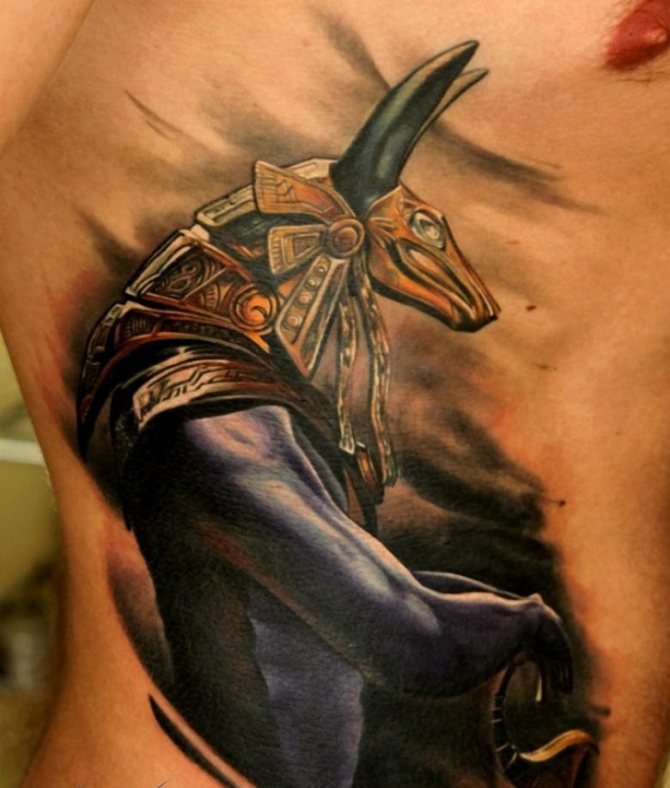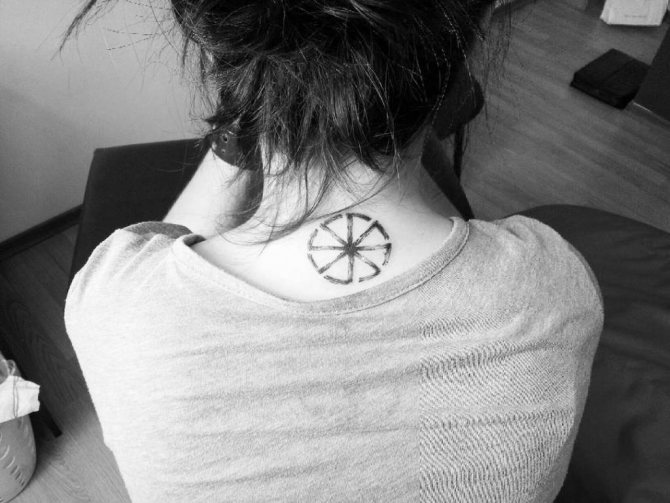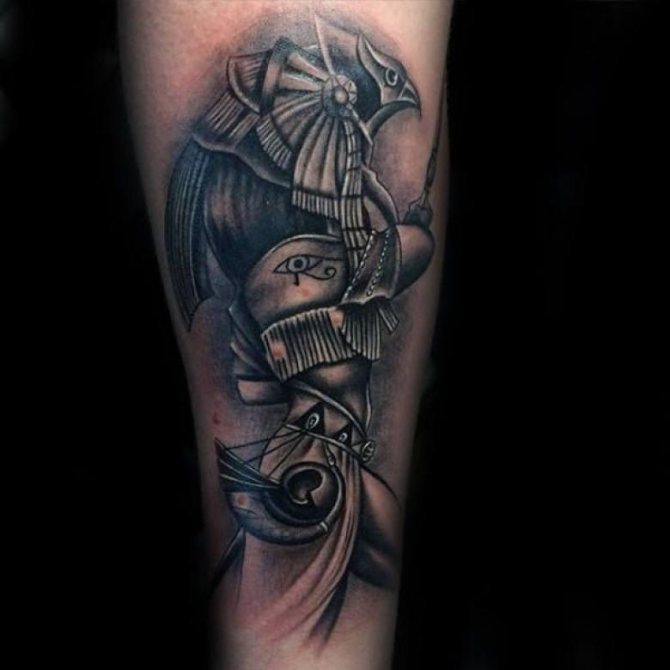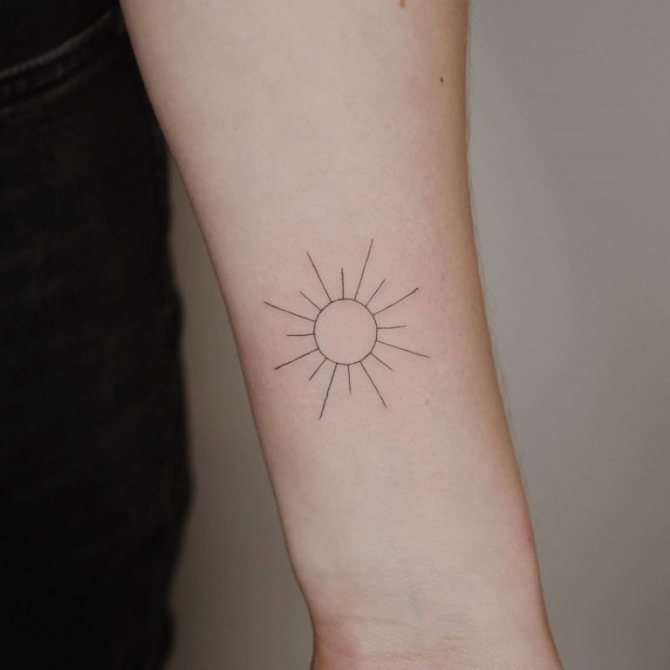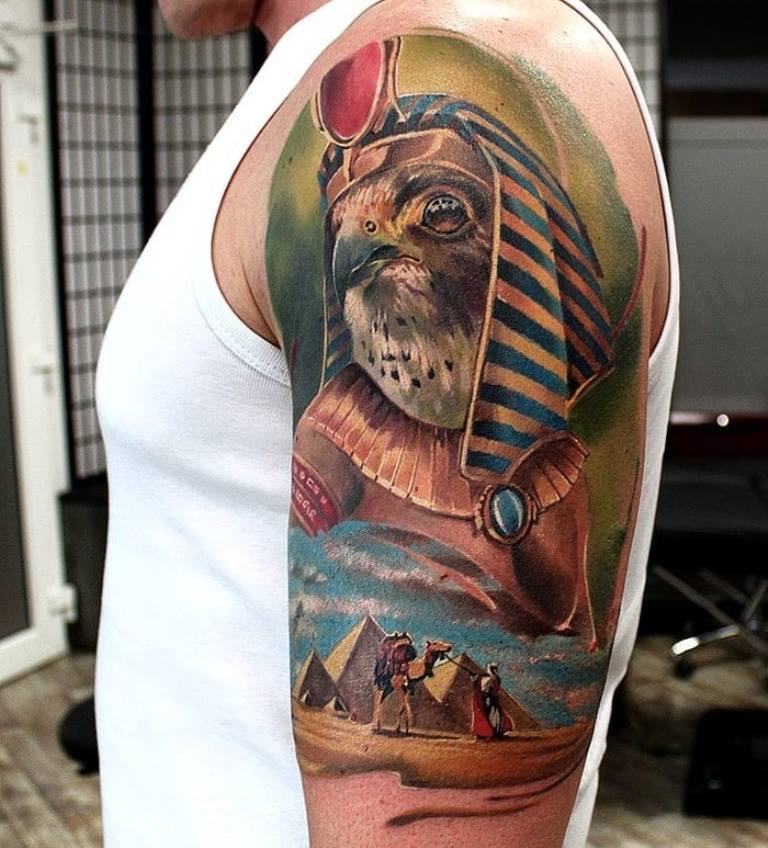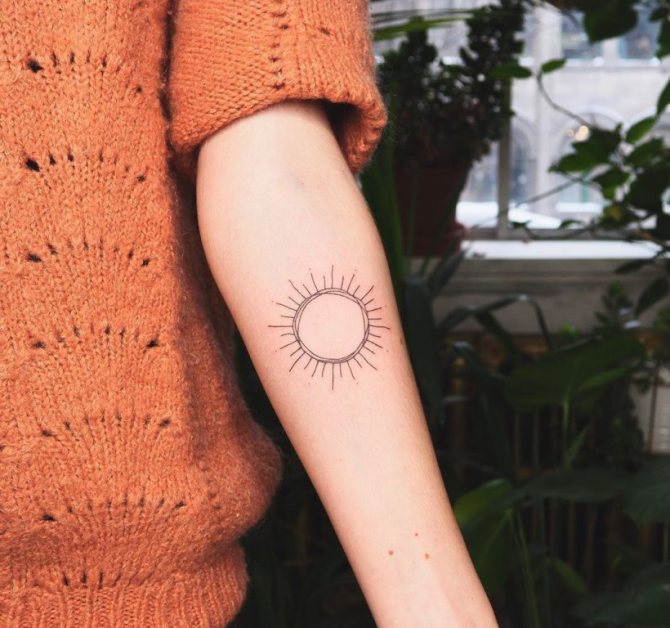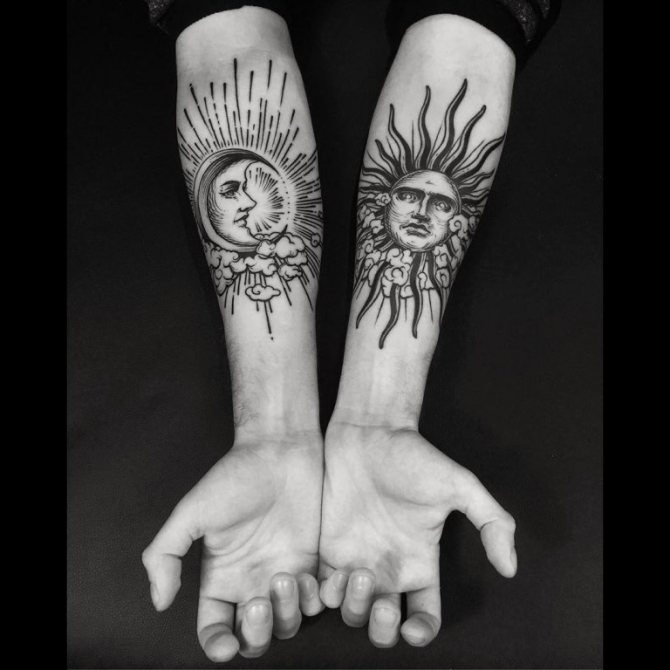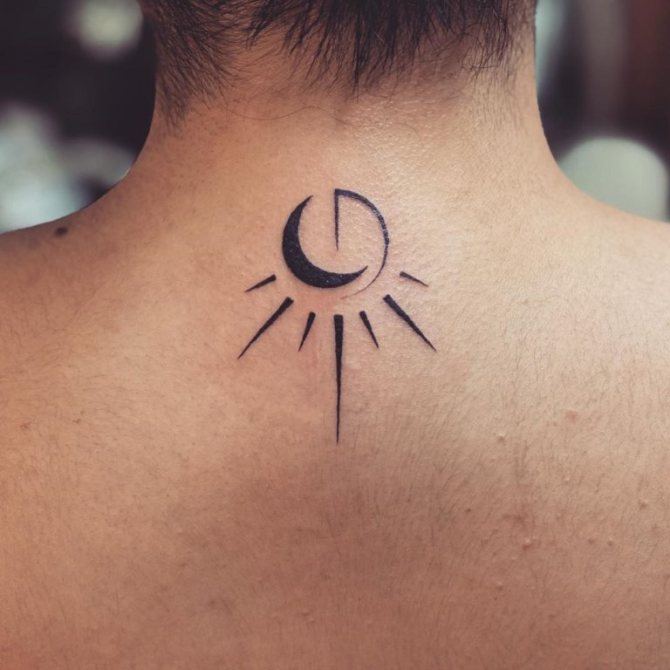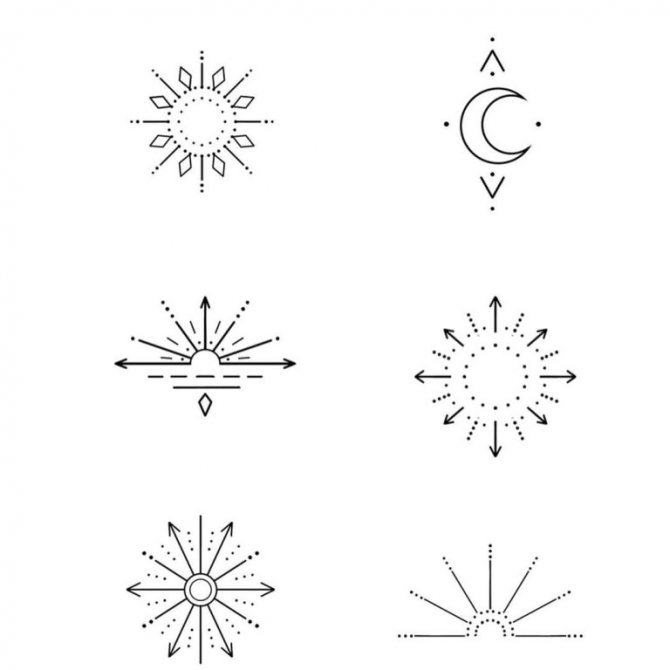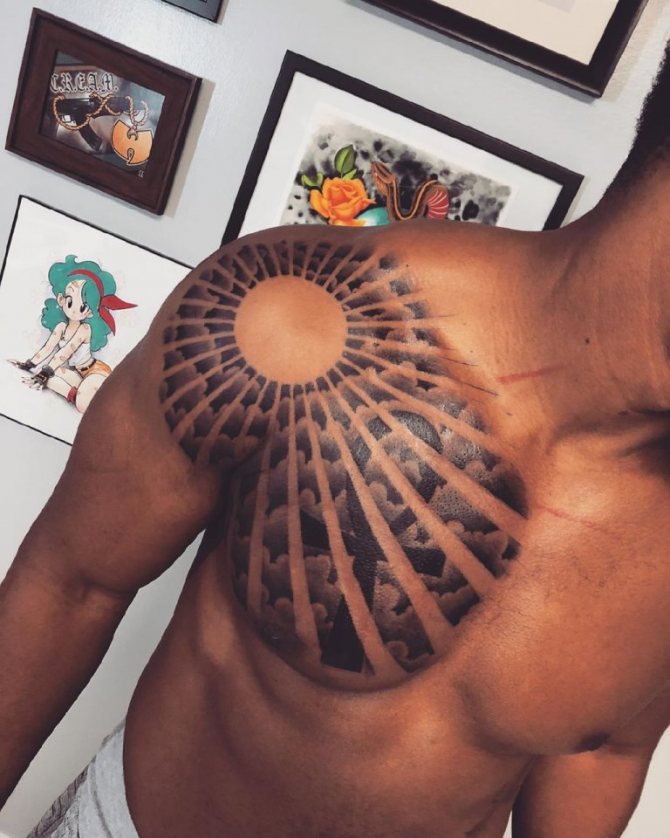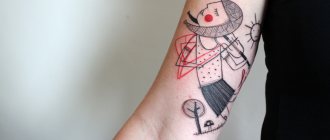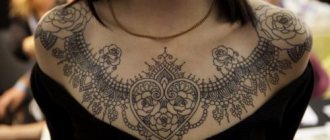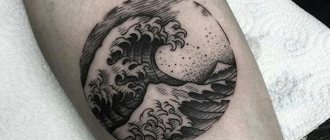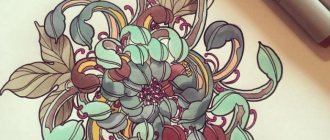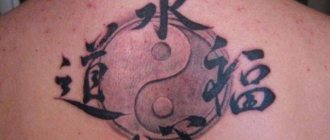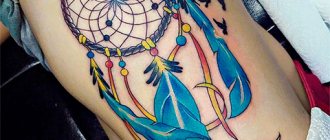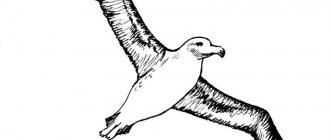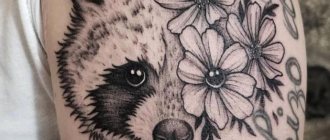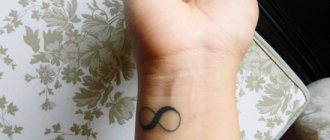In ancient Egypt, there were many magical symbols that people empowered. Mythology abounds with various deities that patronize a certain sphere of life. One of the most striking figures in this sense is the god Ra.
The Egyptians believed that this particular god controls the celestial luminaries, turning day into night and night into day. Usually, tattoos with such a body drawing are stuffed on people who are interested in mythology and history, as well as believe in the patronage of higher forces.
God Ra: meaning
Ancient people were in close relationship with nature, and the Sun was a source of light and heat for them. Not surprisingly, they worshipped the celestial luminary and treated him with special reverence. They had special ceremonies, feasts, praises and requests for his help.
According to mythology, the god Ra is the patron saint of light and darkness. By day he warms the Earth with his warmth, while at night he lights up the afterlife. There he fights his main adversary, the serpent Apophis, who tries to swallow the sun so that daylight is extinguished forever. As morning comes, the god manages to defeat the serpent and dawn comes to Earth.
A tattoo of this deity is depicted as a pharaoh with a human body and the head of a falcon. If the image is complemented by a crown in the form of a solar disk, the tattoo symbolizes the highest spiritual knowledge, wisdom and greatness. Cross, which is holding in the hands of Ra, represents immortality and rebirth, and the scepter signifies divine authority.
Who Anubis was to the Egyptians
In those times, the Egyptian god Anubis was the patron of the afterlife, subordinate only to the supreme god Osiris, well versed in medicinal herbs. His most important role, as indicated in some sources based on the myths and legends of ancient Egypt, was to "weigh the heart" of the deceased (analogous to the Last Judgment for Christians).

Anubis accompanied the deceased to the hall of Moat, where the heart of the person was weighed on special scales (often now depicted together with the image of the deity himself). If it turned out to be light, the soul was conveyed back to the hall where souls awaited their new birth. If, however, the scales showed that the heart was heavy, overflowing with sins committed during life, the Ammut demoness would devour it, and the soul would no longer be embodied.


In the guise of a falcon.
In another version, the god is depicted as a falcon that flies high into the sky, reaching all the way to the sun. Such a symbol is a guide to the realm of the dead and symbolizes spiritual purification. Such a tattoo is a powerful energy filter, with the help of which the owner of the tattoo can not react to negative phenomena and maintain mental equilibrium. A strong bird with a gaze symbolizes the ability of a person to observe and control the course of events, not allowing opponents to destroy plans.
Tattoo with the god Ra can be stuffed as a patron, illuminating the path of life. The bearer of such a tattoo is able to see clearly what is happening, to distinguish the truth from lies and not to get into adventurous stories. Wearing a picture performs the function of amulet and talisman, helping its owner to translate the ideas into life, not yielding to the influence of others.
Sometimes Ra is depicted as the Phoenix, which rises from the ashes. Like a bird that burns in a fire, Ra turns day into night, gradually taking the light from the Earth, and with the dawn returns it. This tattoo symbolizes the ability to overcome obstacles and find a way out of the most difficult situations. The owner of such a tattoo has a strong character, inflexibility and vitality. He tells those around him that for him there are no tests, which he could not cope. The tattoo is a kind of challenge to the world.
God of the Sun in Ancient Greece
In the culture of ancient Greece, this god was considered a symbol of masculinity. Warriors would put an image of him on their bodies before important battles in order to gain the support of Ra. But before doing so, they would give the god a gift of some sort and ask for his help. In a good mood, the god would give warriors a fiery power that would blind and leave enemies vulnerable. A tattoo of this deity helps its wearer to resist opponents, resolve conflicts in their favor, and avoid the negative effects of ill-wishers.
In ancient times, Ra was one of the main gods of the people, because their lives depended on the Sun. As darkness fell, people became defenseless and could fall prey to predatory animals. People feared that the Sun might never rise, so they greeted each dawn with praise to the luminary. They received not only the ability to see but also the ability not to die of cold. Tattoo with Ra is a powerful symbol of the relationship between man and the higher forces. This kind of body art is associated with people who show great respect for the universe and are grateful for all the gifts it offers. The patrons of such tattoos realize how small and helpless a man is in front of the elements of nature and how quickly death can come.
The tattoo of the god Ra symbolizes:
- power;
- indestructibility;
- immortality;
- rebirth;
- purification;
- patronage of higher powers.
Places of application
Anubis is a universal tattoo, it can be applied to any part of the body.
On the chest, you can make a large image of the god with some attributes and other representatives of ancient Egyptian mythology. For example, Anubis can be depicted with Upuat, the god who helped lead people to heaven, or with Kebhut. She is the goddess of embalming, pure water, and the daughter of Anubis. Kebhut protected the bodies of the dead from decay. A tattoo of her image would protect the person from mutilation and strengthen the influence of Anubis.
If there is no desire to add detail to the drawing of the god, then the tattoo can be applied to the shoulder. The minimalist version will look great there. On the arms and legs, such a tattoo will also look good. You can completely score the entire forearm or shin, making a sleeve with a lot of small details.
An Anubis depicted with scales in his hands will enhance the protection of the owner. You can also add pictures of mummies, pyramids, any ancient Egyptian funerary attributes.
The back of the neck and the solar plexus area are energetically strong areas. If the tattoo will be applied there, its value will be amplified.
The meaning of a tattoo for men
A tattoo with this symbol for men is a powerful talisman, giving its owner a strong spirit, courage and determination. This headscarf fills a man with solar energy, gives him good health and longevity. Young people pencil such a tattoo in order to enlist the support of higher forces in case of danger.
God Ra for men represents militancy and courage. Tattoo will be a powerful talisman for people whose work is associated with military service or security. Falcon on the tattoo gives its owner the utmost care, which allows the man in time to notice the approaching danger and respond quickly to it.
The meaning of the tattoo for girls


Ra originally belonged to the men's symbols, but later the picture began to be used and girls as a tattoo. This image helps women to gain strong qualities, which are mainly characteristic of the strong sex: fearlessness, courage and bravery.
Girls with such a tattoo have a keen sense of justice. They will not pass by, having seen the mockery of the weak, even if it will be quite dangerous. Also, the tattoo endows women with intuition and the ability to anticipate the best outcome of events.
Where to apply the tattoo
The silhouette of an ancient Egyptian deity (or just the head in a traditional headdress) can be applied anywhere, because this tattoo is not defined as a symbol in use specifically on the arm or leg.
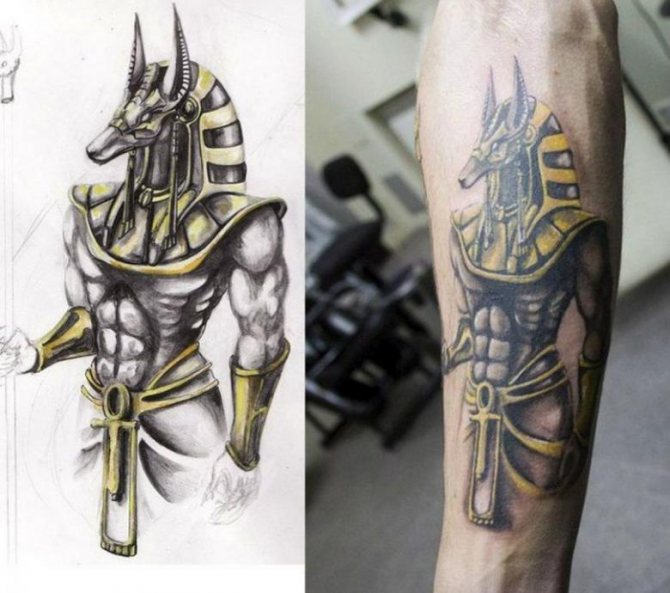

A person who wants to inflict a tattoo, to decide for himself, he wants to hide it from prying eyes or, on the contrary, to put on public display.
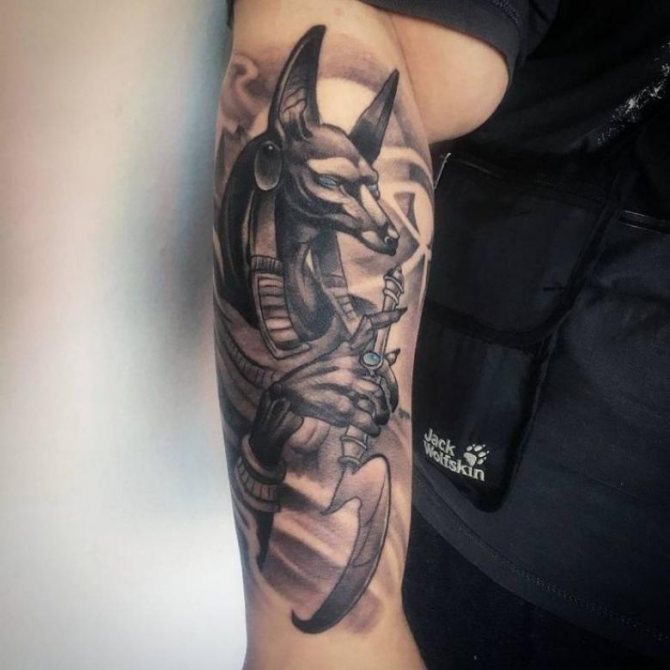

The most chic such a tattoo will look on the shoulder, chest or back. For example, according to photographs of performed tattoos, you can immediately notice how it is emphasized very colorful tattoo quality of the body, whether it is pumped up man's arm or a slender woman's leg.
